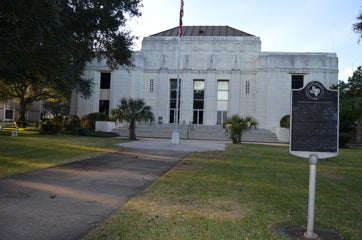Macron wants fire-ravaged Notre Dame rebuilt within 5 years
Published 3:05 pm Tuesday, April 16, 2019

- In this image made available on Tuesday, flames and smoke rise from the blaze as the spire starts to topple on Notre Dame cathedral in Paris on Monday. An inferno that raged through Notre Dame Cathedral for more than 12 hours destroyed its spire and its roof but spared its twin medieval bell towers, and a frantic rescue effort saved the monument's "most precious treasures," including the Crown of Thorns purportedly worn by Jesus, officials said Tuesday. (Associated Press)
Staff and wire report
PARIS — The inferno that raged through Notre Dame Cathedral for more than 12 hours destroyed its spire and its roof but spared its twin medieval bell towers, and a frantic rescue effort saved the monument’s “most precious treasures,” including the Crown of Thorns purportedly worn by Jesus, officials said Tuesday.
French President Emmanuel Macron pledged to rebuild the beloved Roman Catholic architectural landmark, and wanted to see it completed within five years.
“We have so much to rebuild,” Macron said in a televised address to the nation. “We will rebuild Notre Dame Cathedral even more beautifully. We can do it, and once again, we will mobilize (to do so).”
Authorities consider the fire an accident, possibly as a result of restoration work at the global architectural treasure that survived almost 900 years of tumultuous French history but was devastated in the blaze on the second day of Holy Week.
Paris prosecutor Remy Heitz said the inquiry into the fire would be “long and complex.” Fifty investigators were working on it and would interview workers from five companies hired for the renovations to the cathedral’s roof, where the flames first broke out.
Heitz said an initial fire alert was sounded at 6:20 p.m. Monday but no fire was found. The second alert was sounded at 6:43 p.m., and the blaze was discovered on the roof.
Investigators have already questioned nearly 30 people, said a Paris judicial police official, speaking on condition of anonymity in order to comment on an ongoing probe.
News that the fire was probably accidental has done nothing to ease the national mourning for the symbol of national pride immortalized in Victor Hugo’s 1831 novel “The Hunchback of Notre Dame.”
“Notre Dame has survived the revolutionary history of France, and this happened during building works,” said influential former Culture Minister Jack Lang.
Interior Minister Christophe Castaner said there were still some risks to the structure and that it was “under permanent surveillance because it can still budge.”
A plan to safeguard the masterpieces and relics was quickly put into action after the fire broke out.
The Crown of Thorns, regarded as Notre Dame’s most sacred relic, was among the treasures quickly transported after the fire broke out, said Deputy Mayor Emmanuel Gregoire. Brought to Paris by King Louis IX in the 13th century, it is purported to have been pressed onto Christ’s head during the crucifixion. Also saved was the tunic of St. Louis, a long, shirt-like garment from the 13th century, said Culture Minister Franck Riester.
The cathedral’s famous 18th century organ that boasts more than 8,000 pipes also survived.
“The works of art, the most precious treasures were secured last night,” Riester told reporters, thanking teams from city hall, the culture ministry, firefighters and the bishopric who worked to save the items.
Some of the works were being transferred from City Hall to the Louvre, where they will be dehumidified, protected and eventually restored. The minister said the cathedral’s greatest paintings would be removed starting Friday. “We assume they have not been damaged by the fire but there will eventually be damage from the smoke,” he added.
The 3-meter-tall copper statues that looked over Paris from Notre Dame’s 96-meter peak already had been removed from the roof days ago and sent to southwestern France as part of a 6 million-euro ($6.8 million) renovation on the spire and its 250 tons of lead.
Much was saved in the interior too. The only major work damaged inside was the cathedral’s high altar, installed in 1989 under Cardinal Jean-Marie Lustiger. It was hit when the spire collapsed, said Laurent Prades, heritage director for Notre Dame.
“We have been able to salvage all the rest,” said Prades, who watched the recovery overnight. “All the 18th century steles, the pietas, frescoes, chapels and the big organ are fine.”
The three large stained-glass rose windows, among the most famous parts of the cathedral, were not destroyed, but might have been damaged by the heat and will be assessed by an expert, he added.
“The task is — now the risk of fire has been put aside — about the building, how the structure will resist,” said Junior Interior Minister Laurent Nunez.
Nicholas Brake, a civil engineering professor at Lamar University in Beaumont, said there is “good news and bad news” about the prospects for rebuilding.
“The bad news is that in this building, the stone masonry is not reinforced,” he said. “The wood in the building was isolated to the roof and most of the burning matter was isolated there.”
He said that roof contained some lead, which “must be cleared up” as an environmental hazard, and that the roof is “by and large gone.”
To the good side, he said, is that “this particular building does not need the roof to be stable.” The “flying buttresses” — walls of stone, mostly in the rear of the building — keep the building stable.
Brake, whose expertise is in materials, said the limestone in the building could break down at 600 degrees C, something that must be studied.
Moving forward, he said, the builders would use a different type of roof system, probably with timber or lightweight metal as an alternative. He said the ancient roof system was “a nightmare” when it came to safety from fire.
This story has been updated with comments from Southeast Texas area engineering experts.





